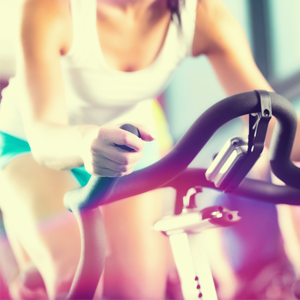
“Torch 3 300 kilojoules in 60 minutes!”
“Congratulations, you just burned 2 000 kilojoules!”
For some women, few things are more motivating than leaving your bootcamp or hopping off of the treadmill knowing they just incinerated the kilojoule equivalent of a Big Mac.
However, paying too much attention to kilojoule-burn claims, whether on your treadmill display or health club’s website, can seriously sabotage your weight-loss progress.
That’s because most fitness trackers, kilojoule counters and estimates of kilojoules burned use ridiculously inaccurate methods for measuring kilojoule burns, often leading you to believe that you torched way more kilojoules than you actually did.
And if you don’t burn more kilojoules than you eat in a given day, you’re not going to lose. You might even gain.
Read more: The 4 easiest ways to cut kilojoules – without counting them
Bad math
For example, a new study published in the Journal of Personalized Medicine reveals popular fitness trackers, including the Apple Watch and MIO Alpha 2, can be significantly off in their kilojoule estimations as often as 93% of the time.
Each fitness tracker utilises its own proprietary algorithm to calculate kilojoules burned, according to Stanford Medical Center, which doesn’t always jibe with the individual wearing it, researchers say.
That partly explains why your bootcamp is so far off on its “burn 2 000 kilojoules in 30 minutes” claim: Oftentimes, classes come up with kilojoule burns by simply having an instructor wear a fitness tracker during the class, says Dr Michael Rebold, department chair of the integrative exercise science program and assistant professor of integrative exercise science at Hiram College in Ohio.
“Then they take that information and use it to promote that exercise class they’re unfolding at their club,” he explains.
Problem is, there are an insane number of intrinsic variables that will always impact how many kilojoules you burn during a given exercise, ranging from your sex, age, weight, to your muscle mass, says Dr Tim Church, professor of preventative medicine at Pennington Biomedical Research Center at Louisiana State University and chief medical officer of ACAP Health, a workplace wellness consulting firm.
In other words, you won’t burn the same number of kilojoules as your 6’2” male instructor. So don’t expect to.
Other classes, meanwhile, refer to average intensity rates from the 2011 Compendium of Physical Activities to estimate kilojoules burned during class, says Dr Church.
Read more: What exactly are macros and how do you track them?
However, when it comes to the number of kilojoules that you burn during any given class, exercise intensity is the greatest player.
Take your average indoor cycling class as an example: If someone is on a bike pedalling at a faster pace or a higher resistance, they’re going to burn more kilojoules than someone who’s just going through the motions,” he explains.
How intensely you’re able to pedal will depend not only on how fit you are, but also factors such as the sleep you got last night and what you ate for breakfast.
So while average intensity rates will ring true for a small subset of class-goers, they are going to be ridiculously off for everyone who isn’t “average”.
So, odds are, you’re not burning the 3 300 kilojoules that exercise class advertised, says Dr Rebold. In reality, you may burn anywhere from 2 500 kilojoules at the low end and 3 700 kilojoules at the high end, he adds.
Meanwhile, research shows that you can’t depend on those kilojoule counters on your favourite pieces of cardio equipment, either, according to ABC News.
In one oft-cited experiment, University of California – San Francisco’s Human Performance Center pitted the kilojoule counters of four different cardio machines against a VO2 analyser.
On average, the machines overestimated kilojoules burned by 19%. Among the four machines, the elliptical machine was the worst offender, overestimating kilojoules burned by 42%.
So, for instance, it could say you burned 400 kilojoules when you actually only burned 240.
Read more: 5 workouts that burn more kilojoules than a spin class
Your no-math solution to weight-loss
In the end, however, the problem isn’t the kilojoule-burn totals in and of themselves – it’s using them to calculate exactly how many kilojoules you’ve “earned” or “worked off”.
After all, if you follow the whole, “I just burned 2 500 kilojoules, so now I can go out and eat 2 500 kilojoule,” you could easily end up gaining, not losing weight, Dr Rebold says.
The more your class, elliptical or fitness tracker overestimated your kilojoule expenditure – and the more you depend on those numbers to determine what you do and don’t eat – the more you stand to sabotage your own efforts.
So instead of relying on a likely inaccurate number to tell you how much you can eat, trust your body’s built-in kilojoule counter: your hunger cues, recommends Denver-based registered dietitian Kendra Glassman.
On a scale of one to 10, with one being absolutely starved and 10 being what Glassman calls “Christmas-dinner-full”, eat when you reach a three or four (you feel a tinge of hunger), and stop when you’re at a six (comfortably full).
This article was originally featured on www.womenshealthsa.co.za
Image credit: iStock




 Publications
Publications
 Partners
Partners










